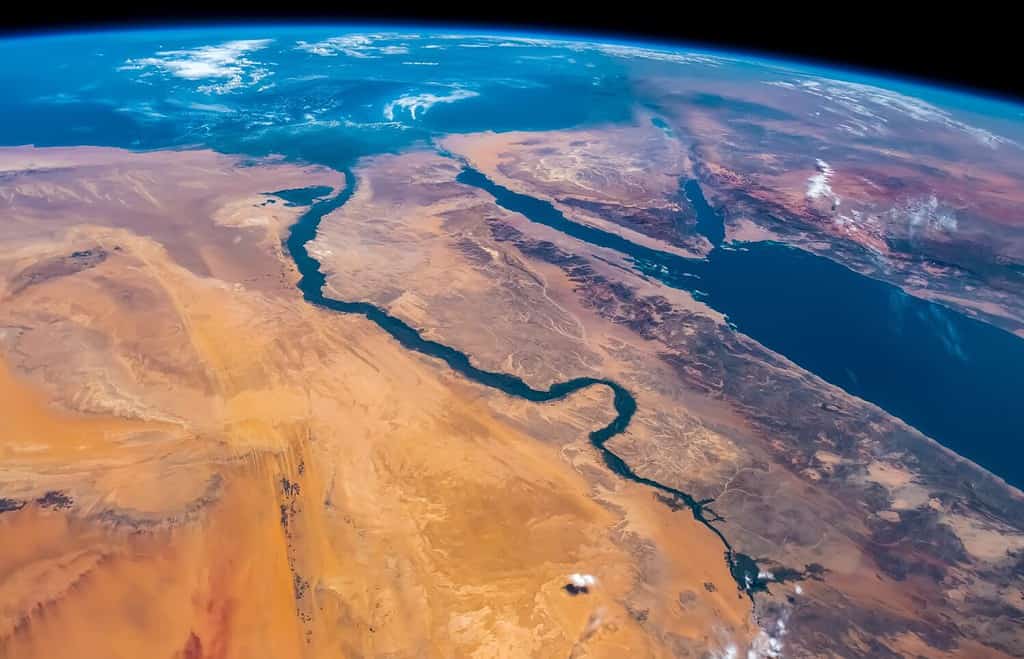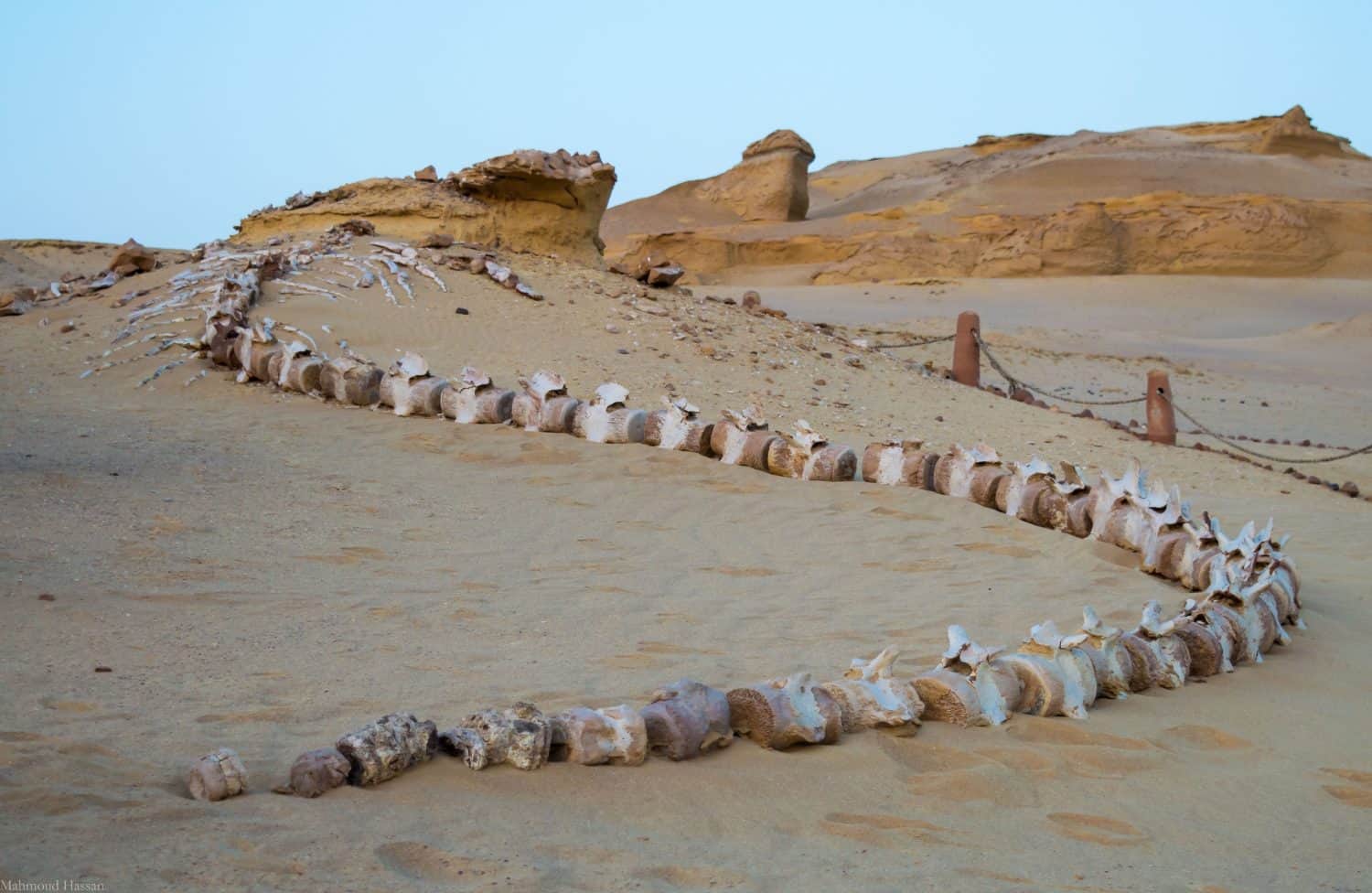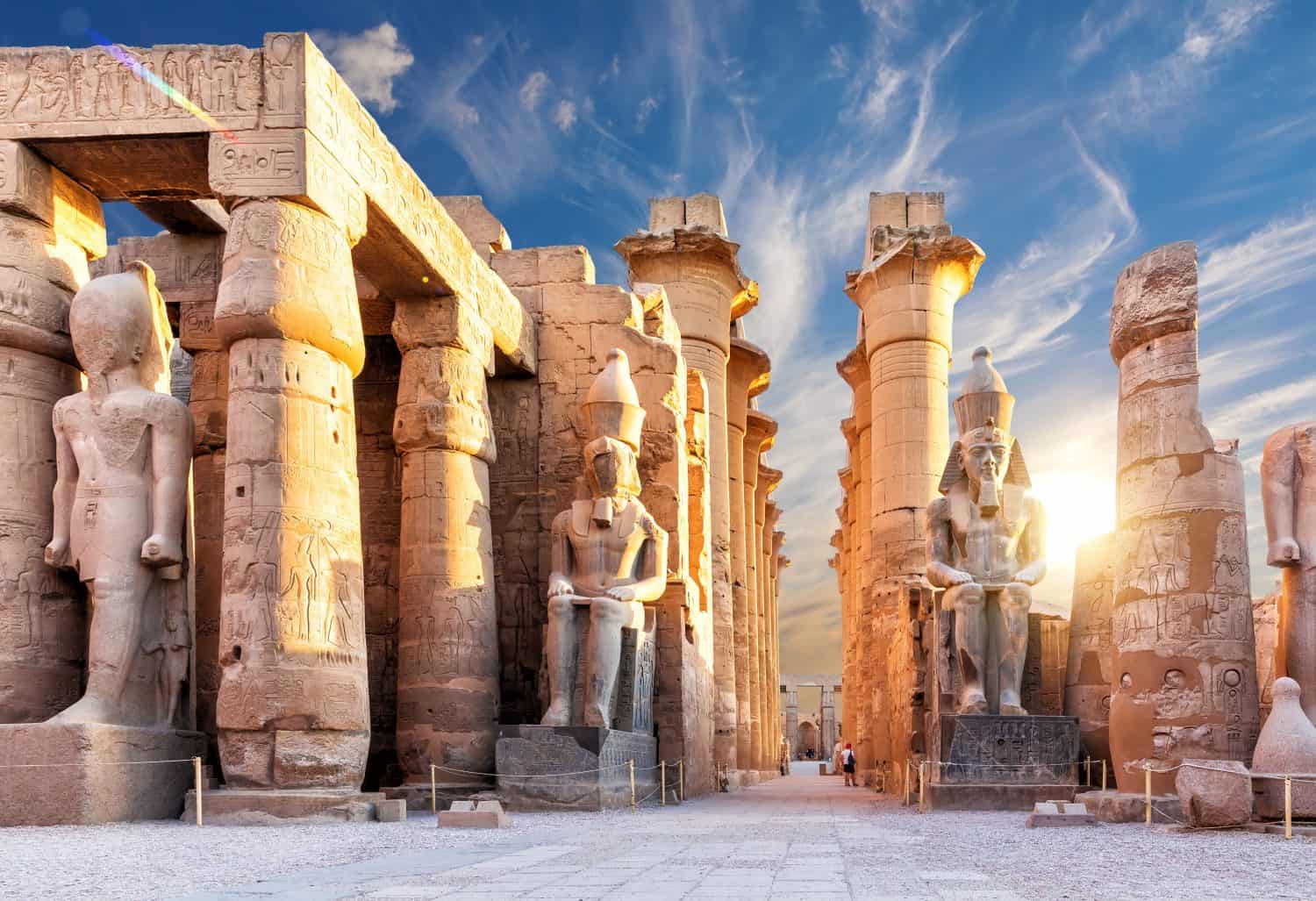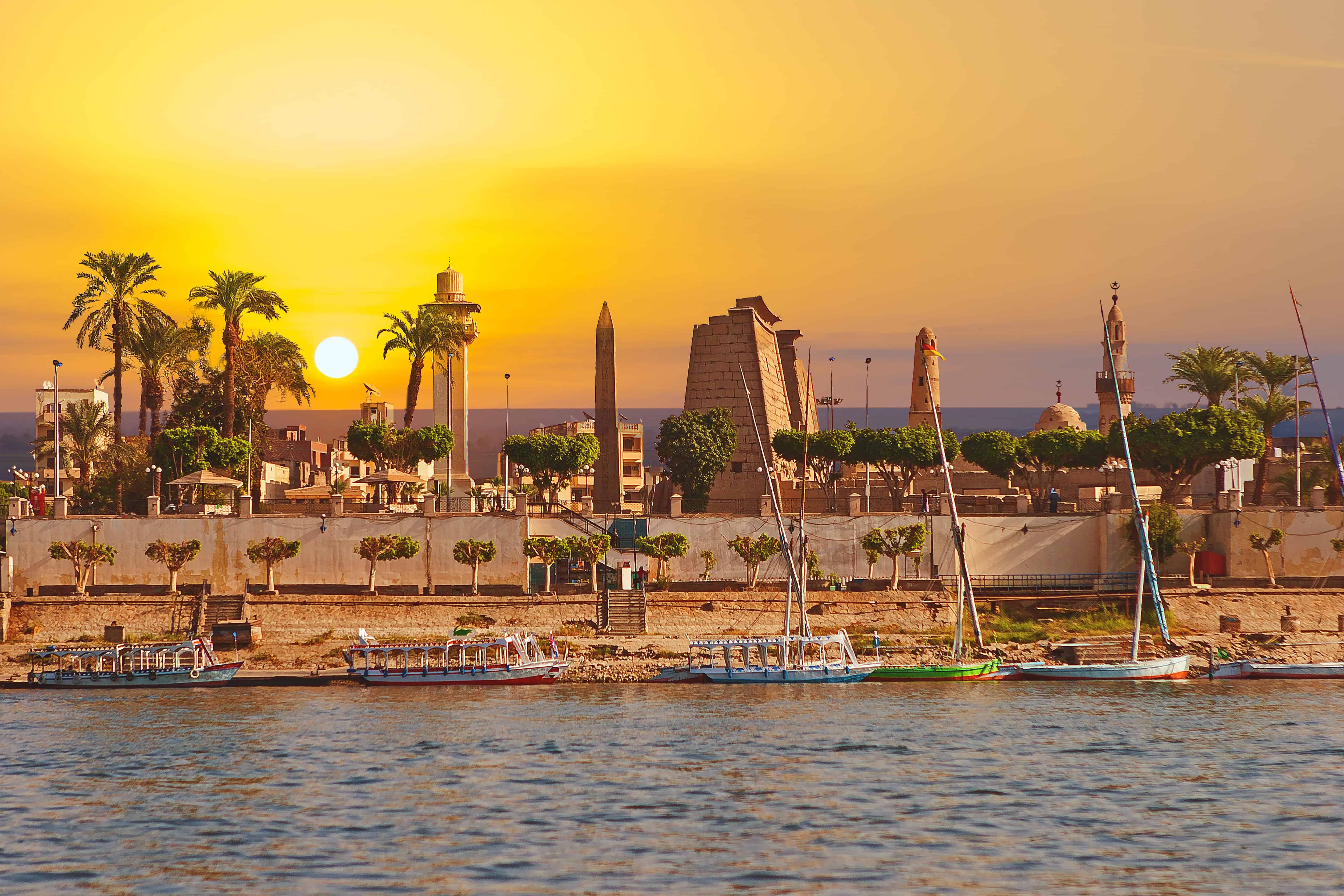Remember the movie starring Brendan Fraser titled The Mummy? Some of the things said in the film are actually real, and some of the events may have very well happened. When we’re talking about the oldest cities in Africa, we are going very far. We are going so far, the numbers go backward. That’s right, we’re talking about thousands of years before the common era in Ancient Egypt, to be exact. It is well-known that Ancient Egyptians created monuments that have been called wonders. Those monuments and ancient civilizations are located in cities that still stand today.
Let’s explore the three oldest cities in Africa. It was quite hard to pinpoint exactly one because historians disagree on which one takes the top spot. All three of the oldest cities in Africa are located in Egypt. We’ll explore each one in more detail and provide some fun facts.
Location of the Oldest Cities

Egypt, located in northeastern Africa, is one of the oldest countries in the world.
©Emre Akkoyun/Shutterstock.com
All three of the oldest cities are located in Egypt. One is enclaved in the Faiyum Oasis, near the Nile River. Faiyum, the furthest north of the three cities, is about 62 miles from Cairo, Egypt’s capital city. It has a population of around 500,000, making it a major population center for the country. The other two cities are Girga and Luxor. They sit along the Nile River. Girga is further north than Luxor. Girga, with a population of 162,000, is smaller than Luxor, which is a major city of more than 1 million.
Let’s explore in more detail the three oldest cities — Thinis (now Girga), Shedet (now Faiyum), and Thebes (now Luxor) — in Africa.
Thinis (Modern Day Girga)

Girga is the modern-day city where Egyptologists suppose the ancient city of Thinis could be.
©Wead/Shutterstock.com
This ancient Egyptian city was the capital city before Upper Egypt was unified. Believed to have existed since 4,000 B.C.E., Egyptologists have said that Thinis is somewhere near or around Girga, but as of 2023, Thinis has not been discovered by archeologists.
Thinis was an important city in terms of both religion and military. The first aspect of its importance was that the Book of the Dead stated that Thinis was “a mythical place in heaven.” The other part of its importance was because the first pharaoh, Narmer, created the center of his kingdom here. This is well documented throughout history.
Unfortunately, Thinis started to decline in importance when Memphis became the capital instead. When the Romans conquered Egypt, Thinis further lost its status as an important center.
Girga Today
Because archeologists have pinpointed that Thinis is located around Girga, it is said that Girga is the city that replaced Thinis. Girga, like its probable predecessor, was also an important center for its conquerors. During the time that the Ottoman Empire ruled over Egypt, Girga was the capital of Upper Egypt. Today, Girga is located on the west bank of the Nile River and has a population of about 162,000.
Shedet (Modern Day Faiyum)

Many mummy portraits have emerged from archeologists’ finds in Faiyum.
©Mahmoud Hassan/Shutterstock.com
Shedet, which is what Faiyum used to be called, is said to have been inhabited sometime between 2685 to 2180 B.C.E. Faiyum was set up by the Old Kingdom and it was the center of the cult that worshiped a crocodile god called Sobek. When the Roman Empire conquered Egypt, they renamed the city Arsinoë and established Catholicism in the area. Mummy portraits and death masks were found in Faiyum when the Romans controlled the area. These artifacts have given historians a deeper glimpse into what life was like for Ancient Egyptians.
Faiyum Today
A city of over 500,000, Faiyum is in the Faiyum Oasis, which is why its population has increased over the years. It’s one of the few places in Egypt that can be inhabited. As a large city, Faiyum has everything for locals and tourists. A canal runs through the middle of the city and the city center is located on the canal.
Although the city sits on an oasis, it still has a desert climate where its temperatures average between 55 degrees Fahrenheit and 83 degrees Fahrenheit. Faiyum has one UNESCO World Heritage Site, which is Wadi Al-Hitan, a site where paleontologists found the oldest fossils of a whale.
Thebes (Modern Day Luxor)

Waset, which is present-day Luxor and otherwise known as Thebes, means “city of the scepter” in Ancient Egyptian.
©AlexAnton/Shutterstock.com
Thebes is perhaps one of the most influential and well-known cities in Egypt. After Cairo and Alexandria, Thebes takes the top spot. Thebes is an ancient Egyptian city that was located in what is now Luxor. The Ancient Egyptians called the city, Waset. It was the capital of Upper Egypt’s fourth nome.
Waset has been inhabited since around 3,200 B.C.E. and in the beginning, it served as a trading post. It is said that no buildings have survived during this period, but archeologists have constantly been looking. Pharaoh Mentuhotep II managed to unite all of Egypt, ruling for 51 years. During that time, he built a complex of temples in Deir el-Bahri. Thebes declined in importance after this, but that wouldn’t last.
When Ahmose I became Pharaoh, Thebes became the capital and worship center. The city was rebuilt to show off its significance. The temples in Thebes were showered with expensive things. This continued under the reign of Tutankhamun and other pharaohs after him. Thebes was the glory of the kingdom and that would last for several centuries.
Unfortunately after the 7th century B.C.E., the government’s power collapsed and Thebes ceased to be an important center, prompting economic disintegration. The city would later be conquered first by the Assyrians, then the Persians, followed by the Romans. In 640 C.E., the Arabs successfully invaded Egypt, which ended Roman control of the land.
Luxor Today
Luxor is a major city in the southern part of the country. It has a population of 1.3 million and there have been many artifacts and monuments discovered by archeologists. Because of these findings, Luxor is usually called the “world’s greatest open-air museum.” Recently, archeologists found an ancient lost civilization they have dubbed the “lost golden city” and characterized it as the “second most important archeological discovery since King Tut’s tomb.”
Today, if you visit Luxor, you can visit the temples and tombs of the Ancient Egyptians, including the Theban Necropolis, Luxor Temple, and Karnak. The Theban Necropolis contains the Valley of the Kings and Valley of the Queens, which are said to have housed the final resting place of several important Egyptian pharaohs. These archeological finds have greatly increased tourism in the area, contributing to the city’s economy throughout the years.
Conclusion
And there you have it, the oldest cities in Africa are thousands of years old. They were known by their ancient names of Thinis, Shedet, and Thebes (or Waset to Ancient Egyptians) before. But now, these three cities are in ruins and newer cities have taken their place in the same spot. So much history is packed in these cities and archeologists have for so long relished in their findings.
These findings in these three ancient cities in Egypt have opened doors into how life was in Ancient Egypt. It has taught us about human civilization. We can learn so much from these ancient-turned-modern cities. The next time you find yourself on a trip to Egypt, these cities are a good way to find answers not only about human life but ours, as well.
Thank you for reading! Have some feedback for us? Contact the AZ Animals editorial team.








